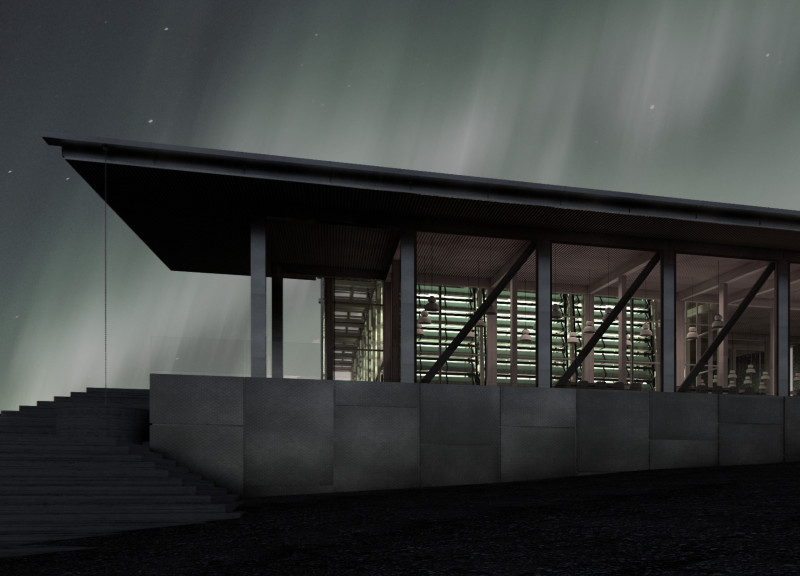5 key facts about this project
The Garovin project, meaning "Garden Oasis" in Icelandic, is located in the Myvatn region, an area known for its geothermal features and unique volcanic landscapes. This design aims to create a harmonious connection between nature and the built environment, providing a space for dining and relaxation. The concept reflects the idea of an oasis, standing out amid the rugged terrain while focusing on integration, sustainability, and user experience.
Architectural Form and Structure
The design features bold vertical blade walls on the eastern side. These walls draw inspiration from the geological characteristics of the area, giving the structure a distinctive appearance. These elements provide not only stability but also enhance the visual profile of the building. To the west, a timber-framed greenhouse creates a sense of openness, allowing natural light to flow into the interiors. The lounge bar on the southern facade is fully glazed, offering wide views of the surroundings, which connects the indoor space with the natural landscape outside.
Layout and Functionality
The arrangement of spaces is designed to enhance visitor experiences. The dining areas are strategically positioned to take advantage of views, allowing guests to enjoy the scenery while being aware of the greenhouse activities. This layout fosters a connection between dining and food preparation. Service and guest areas are designed for easy access, ensuring that the flow of movement is efficient and that visitors can enjoy a peaceful atmosphere.
Materials and Sustainability
Sustainability is a key consideration in the project. Galvanized steel is used for external elements, chosen for its durability in the local climate. Certified timber is prominently used throughout the design, which supports responsible sourcing and adds warmth to the interior spaces. Rainwater capture systems are integrated into the design, demonstrating a commitment to efficient resource use.
Design Details
A notable feature of Garovin is the rotating vertical gardens that frame the restaurant area. These gardens not only serve as an aesthetic element but also contribute to food production, encouraging a connection between guests and the environment. This thoughtful integration enhances the overall experience, linking the act of dining with the natural world and reinforcing the theme of an oasis amid the challenging terrain of the Myvatn region.






















































